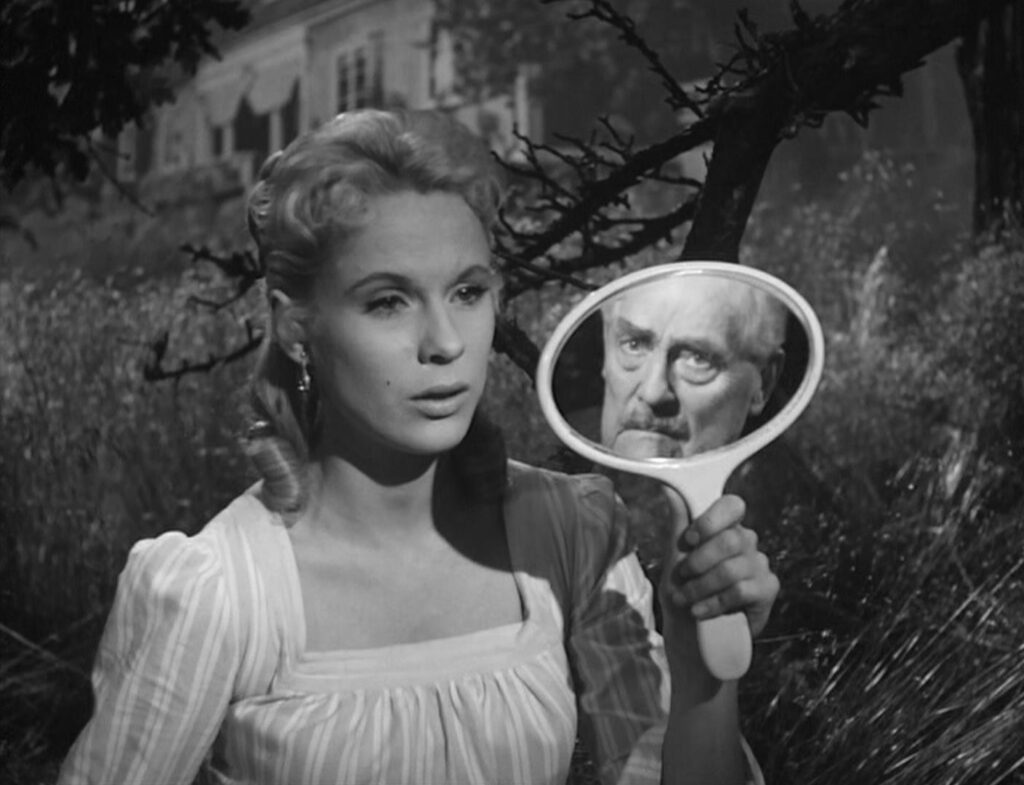
Wild Strawberries
1957, directed by Ingmar Bergman
Near the end of Wild Strawberries, at the moment when the bishop bestows the honorary degree on Dr. Isak Borg, the movie puts a challenge to the viewer. The doctor tells us in voice-over, “During the ceremony my thoughts strayed to the day’s events, and it was then I decided to write down what had happened. In this jumble of events, I seemed to discern an extraordinary logic.” He never says what this extraordinary logic might be, but the movie gives us enough information to work it out ourselves.
This challenge is similar to the riddle at the end of The Cabinet of Dr. Caligari when the doctor says he knows how to cure Francis, without ever telling us what he plans to do or what the nature of Francis’ delusion is. Unlike Dr. Caligari however, the old doctor here is reflecting on his own life, not a patient’s. Unlike Francis he is not a madman, but a sane and respected member of society. Both movies are studies of a single character, but whereas Caligari is about the fault in its subject, Wild Strawberries goes about as far as a movie can toward creating a fully rounded character.
The secret to Isak Borg’s impressively thorough characterization is in the movie’s paradoxical ability to hold a consistent point of view – the whole movie is seen as if through the doctor’s eyes – while simultaneously dissolving any fixity in point of view. We see Borg through so many different eyes that his portrait becomes a kaleidoscopic array of contradictory qualities. His housekeeper Agda regards him fondly as a stubborn yet helpless employer; his daughter-in-law Marianne considers him selfish, cold, and egotistical; his cousin Sara speaks of him as highly moralistic and much too good for her; his long-deceased wife finds him weak and contemptible; the gas station owner Henrik Åkerman greets him with overwhelming gratitude; his son Evald reportedly hates him; and the three young hitchhikers see him as a lovable and respectable old man. It’s a wonder that all these people are looking at the same man, yet the portrait is believable.
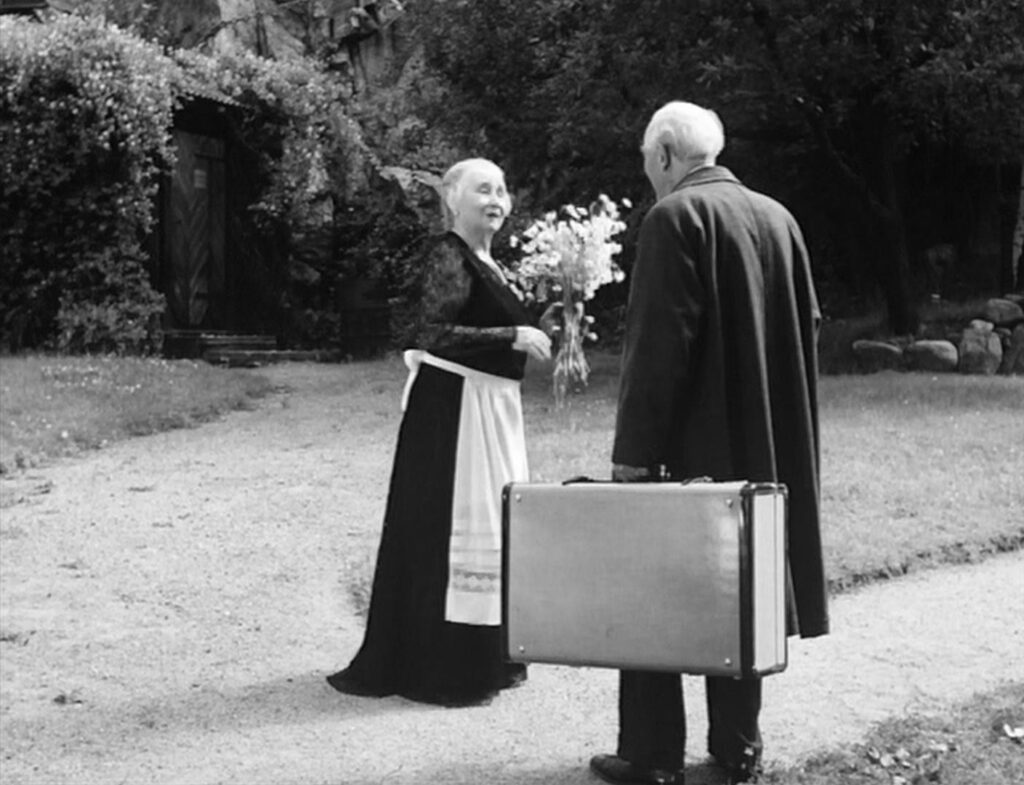
The variety of personal points of view is matched by the variety of situations in which Borg’s personality reveals itself. We see his good humor when dining by the seaside, his quiet dignity at the honor ceremony in the cathedral, his pain upon hearing that his son hates him, his calm demeanor after the traffic accident, his prickliness when Agda bosses him, and his humiliation at witnessing the infidelities of Sara and his wife.
Beyond the variety of social settings, the two nightmares and two flashbacks further deepen Borg’s character. The first nightmare, at home in Stockholm, is full of omens of death, and it precipitates his sudden decision to drive to Lund instead of flying. His fears prepare him to reflect on his life, and he senses that a long drive will facilitate reflection better than a quick airplane flight. If nothing else it gives him occasion to visit his mother and to stop at his childhood summer home, where he recalls his love for Sara and his pain when she preferred his brother to him. The insecurities evoked by these recollections intensify in his second nightmare while napping along the North Sea coast. The dream magnifies the cruelty of Sara’s rejection; a surreal university exam awakens feelings of inadequacy; and the memory of Sara’s inconstancy prompts him to relive his wife’s infidelity.
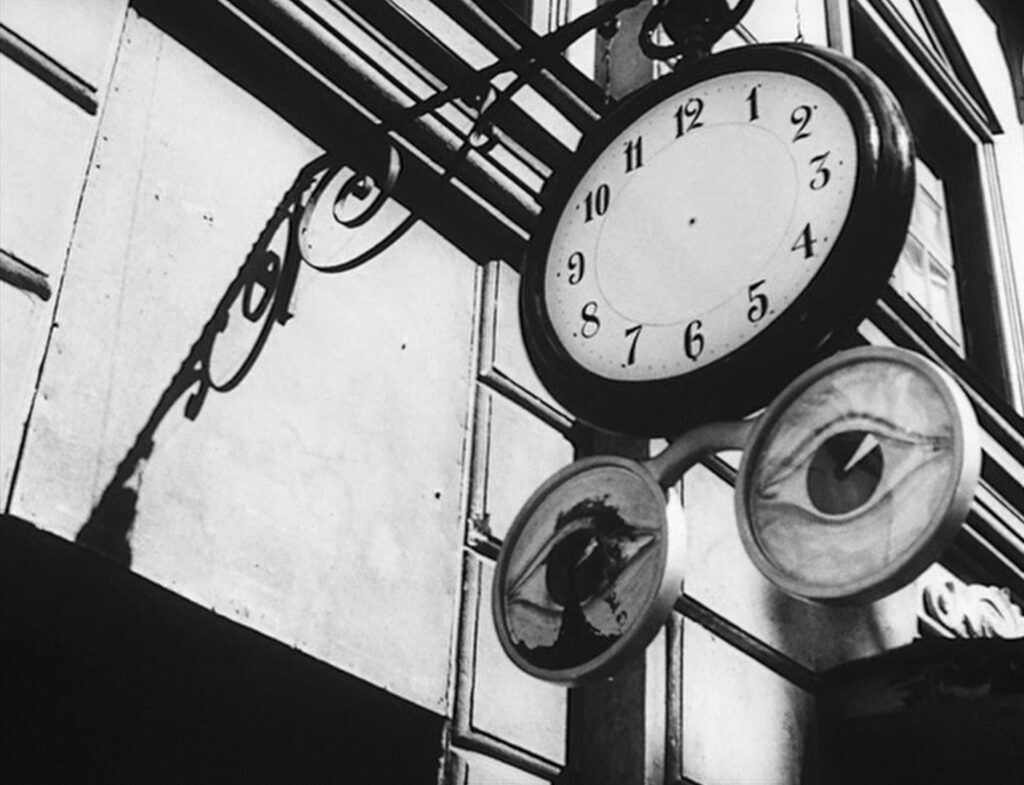
Wild Strawberries thus examines Borg from a multiplicity of angles that add up to a lifelike portrait. Few movies bring a character to life so well, and it’s instructive to compare Wild Strawberries with a couple of more standard approaches to character analysis: the biography and the case study. Biographies are usually constrained by their fidelity to facts. A human life is messy, full of randomness, and does not necessarily build to a clear point. In short, it’s not a story, and making a story out of it requires compromises. Furthermore the long span of a lifetime is not ideally suited to a movie. A film can spread a story over years or decades, but it cannot make viewers feel such a long duration as well as a novel or a multi-hour serial can; there is always something unconvincing about the extreme compression of many years into two hours, because the viewer is not a full participant in the time. Wild Strawberries enjoys the advantage of fiction, allowing it to assemble lifelike incidents around a clear point, and it also benefits from being confined to a single day. Borg’s flashbacks and dreams touch his future and his past, but they are rooted in his present feelings. The movie captures the feeling of a whole life within a short span of time because it so convincingly gives Isak Borg a past while drawing a rich context around his present life.
Just as Wild Strawberries surpasses a biography in the richness of the life it portrays, it also draws Isak Borg more broadly than a psychological case study because its portrait is not restricted to a particular problem of the character. So many movies, especially since the 1980s, focus on a character’s dysfunction as a shortcut to drama, but Wild Strawberries is interested in the whole person. Borg’s flaws are numerous, but they are normal.
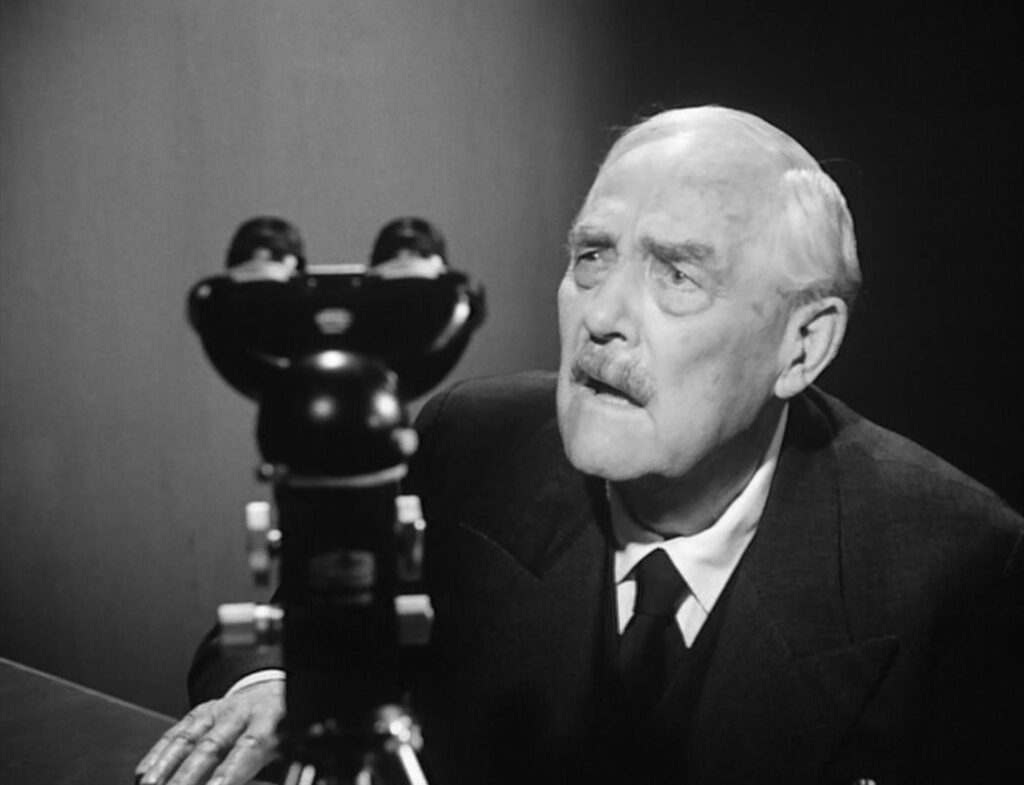
The fact that we see Isak Borg from so many points of view does not mean that his personality eludes definition. The opening lines provide a key to understanding him. On the night before his journey he sits at his desk smoking a cigar, and he tells us: “In our relations with other people, we mainly discuss and evaluate their character and behavior. That is why I have withdrawn from nearly all so-called relations. This has made my old age rather lonely.” His meaning is not immediately clear, but as we get to know him we see how wary he is of people’s judgments. He is hurt by rejections from his wife, son, and cousin, and we know that his withdrawal from relationships pains him because his second nightmare reveals a fear of loneliness.
The ceremony at Lund Cathedral is the turning point of Wild Strawberries. Everything changes for Isak Borg in the following scene at Evald’s house. He is no longer withdrawn. He apologizes to Agda for the morning’s argument and invites her to drop formalities with him. He asks the hitchhikers to keep in touch. He forgives Evald’s debt and tells Marianne that he likes her. Already in five separate ways his behavior has changed: he’s become sensitive, informal, open, kind, and warm. How can we explain such a transformation?
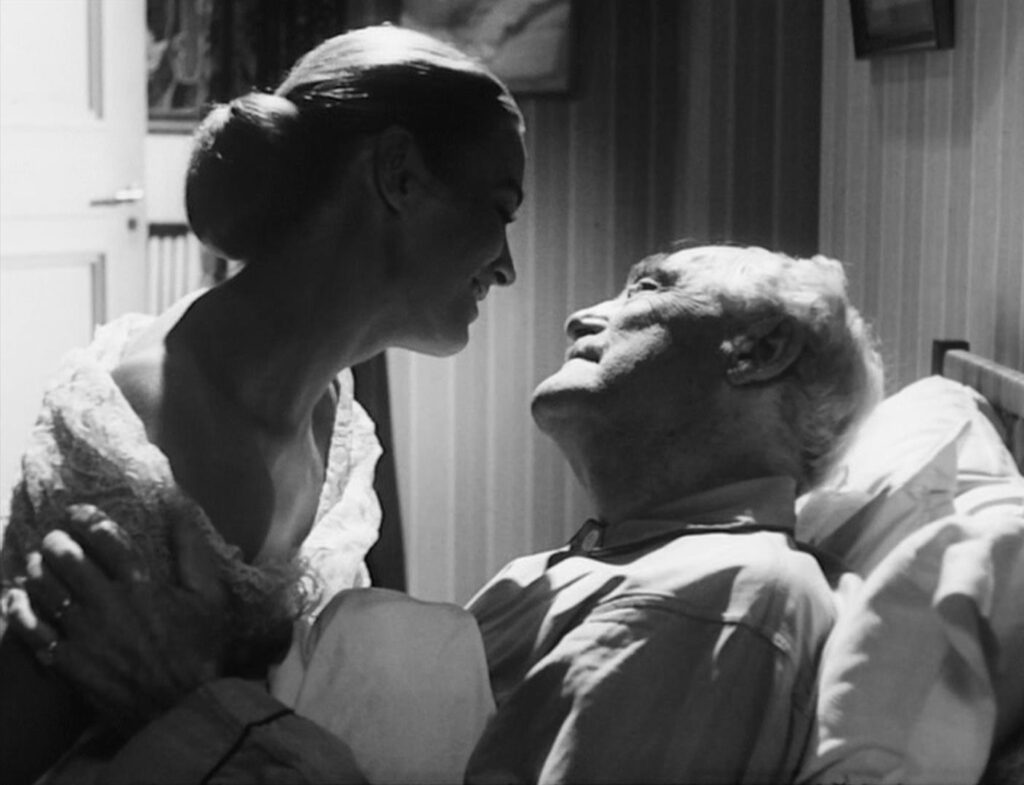
Part of the answer is surely that Borg has witnessed everything we have. Through the dreams, memories, events, and personal encounters of the past day we have come to see Isak Borg more completely than even his family sees him, but he too has seen all of this, as if he has watched the movie with us. He has come to understand, as we should, that when other people “discuss and evaluate” our “character and behavior” they almost invariably reduce people to words, and in so doing they formulate opinions more absolute than what they actually believe. Evald may have told Marianne that he hated his father, but the reality of his feelings is more tempered and ambiguous. This becomes obvious in Evald’s house, but Borg knows it already in the cathedral.
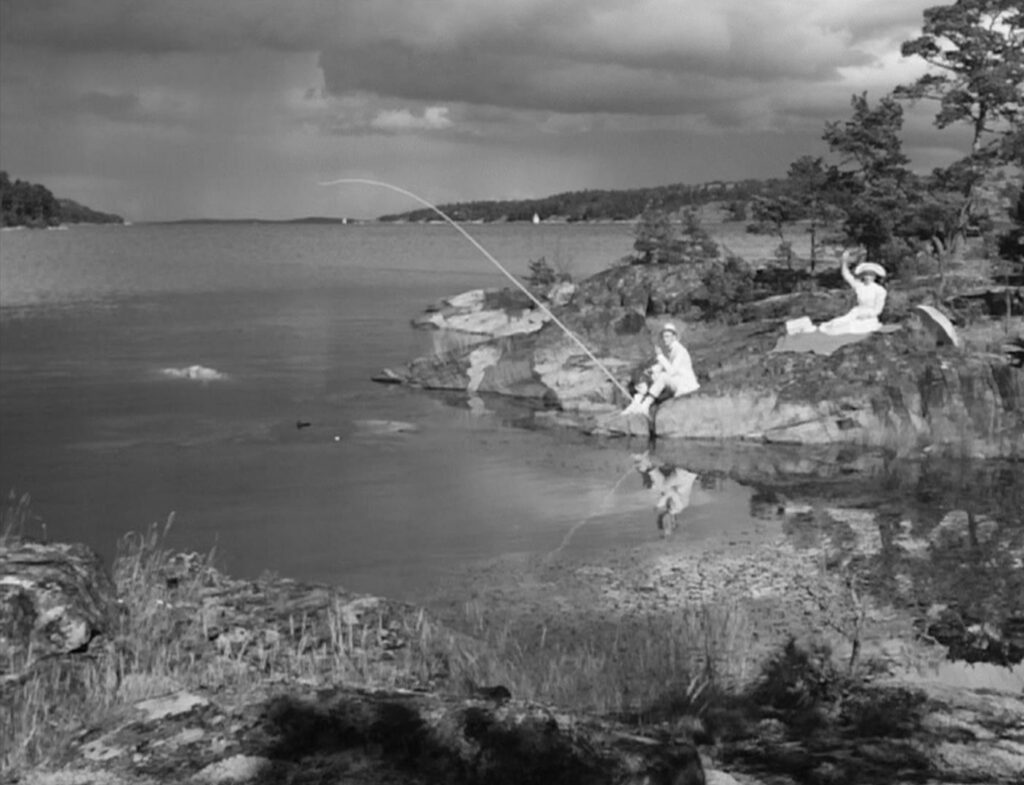
Isak Borg’s day ends with a memory of Sara guiding him to a spot by a lake where he finds his mother and father across an inlet, fishing. They see him and wave to him. It’s evidently a moment of great warmth. This flashback contrasts with the opening nightmare, not only in its pleasant mood but also in its vision of time. Time in his nightmare is linear, and it is running out. The clock has no hands because he imagines he has no time left. In the final flashback by the lake he is still 78, but his parents are young. The oppressive countdown of linear time has given way to a feeling of eternity, where the past never fades away. Like the thaw in Borg’s personality at his son’s home moments earlier, this vision also springs from his epiphany in the cathedral. Just as the events of the day have taught him to see himself whole, from every angle at once, they have also taught him to see time in the same way.
CONNECTIONS:
The Cabinet of Dr. Caligari – Unanswered question at or near the end that challenges the audience
Casablanca – Idea of recapturing the past and carrying it forward; brief timespan with flashbacks used as a keyhole to a broad vision of time
Spellbound – Surreal dream sequences
Les parents terribles – Idea that people’s feelings for each other are rarely as simple as they imagine
All About Eve – Characterization across a wide spectrum of social settings
Ugetsu monogatari – Bracketed by expressions of linear time and eternity
Equinox Flower – Parents and children waving to each other across a body of water in a key scene detached from the flow of time
Cléo from 5 to 7 – Turning point where a character changes in multiple ways
Gertrud – Honorific ceremony; blending of past, present, and future; perspective of old age
Blow-Up – Transformation of a character in 24 hours
Cries and Whispers – Clocks at beginning; ends with a treasured moment of warmth and intimacy that represents eternal time